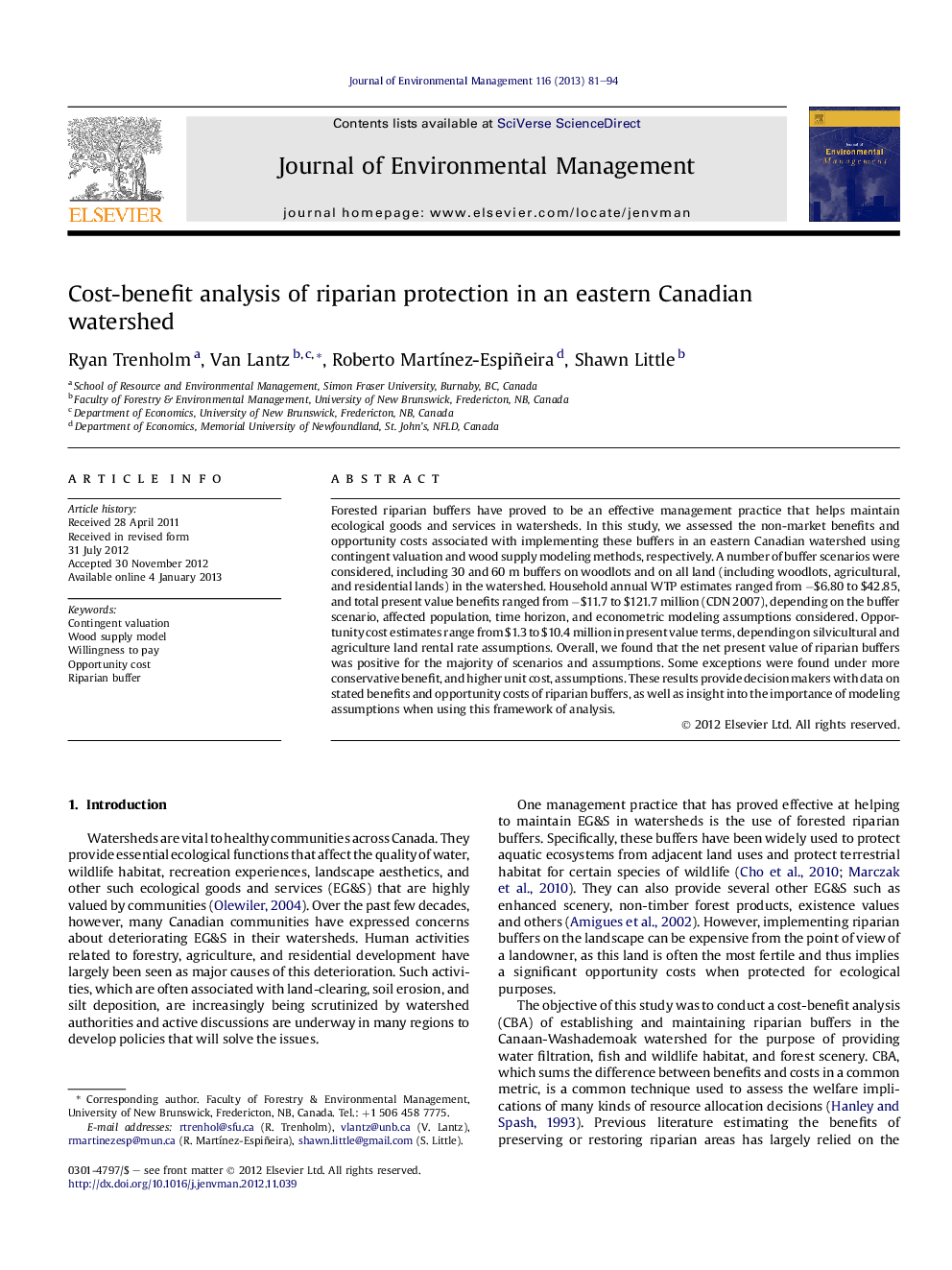| Article ID | Journal | Published Year | Pages | File Type |
|---|---|---|---|---|
| 1056383 | Journal of Environmental Management | 2013 | 14 Pages |
Forested riparian buffers have proved to be an effective management practice that helps maintain ecological goods and services in watersheds. In this study, we assessed the non-market benefits and opportunity costs associated with implementing these buffers in an eastern Canadian watershed using contingent valuation and wood supply modeling methods, respectively. A number of buffer scenarios were considered, including 30 and 60 m buffers on woodlots and on all land (including woodlots, agricultural, and residential lands) in the watershed. Household annual WTP estimates ranged from −$6.80 to $42.85, and total present value benefits ranged from −$11.7 to $121.7 million (CDN 2007), depending on the buffer scenario, affected population, time horizon, and econometric modeling assumptions considered. Opportunity cost estimates range from $1.3 to $10.4 million in present value terms, depending on silvicultural and agriculture land rental rate assumptions. Overall, we found that the net present value of riparian buffers was positive for the majority of scenarios and assumptions. Some exceptions were found under more conservative benefit, and higher unit cost, assumptions. These results provide decision makers with data on stated benefits and opportunity costs of riparian buffers, as well as insight into the importance of modeling assumptions when using this framework of analysis.
► We estimate net present values of restoring and enhancing riparian buffers. ► We examine different buffer programs, household populations, and time horizons. ► Net present values are positive under most programs considered. ► Net present values depend on household population and time horizon assumptions.
